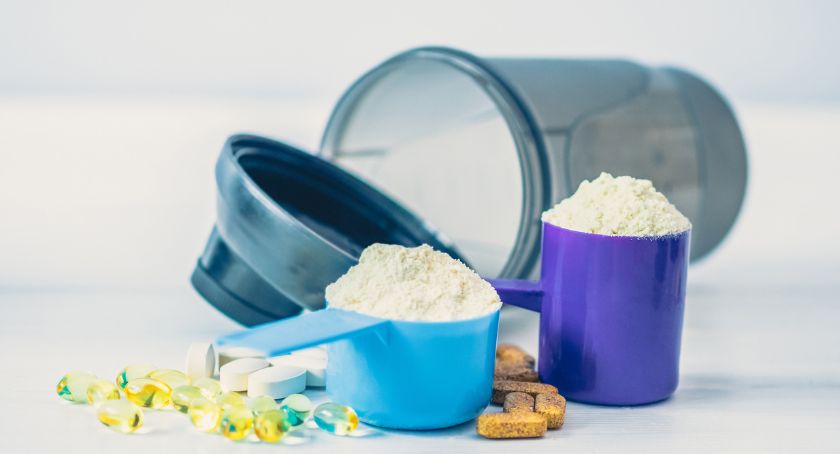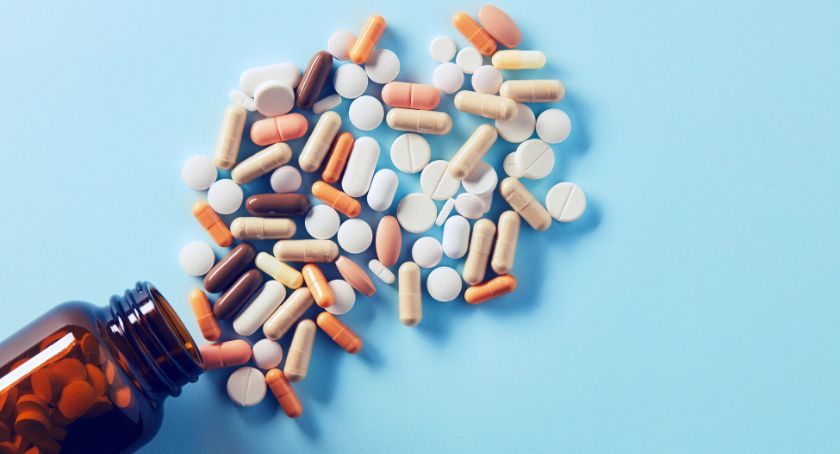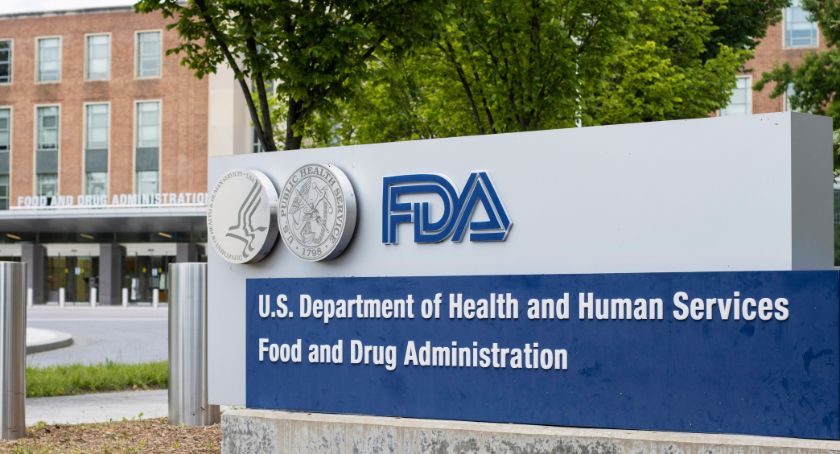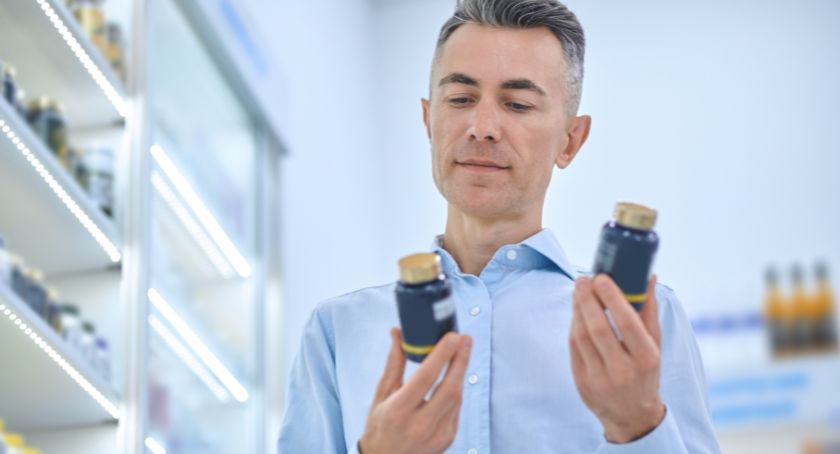Features
Energy for Everyone: Product Variety Adds Spice to a Common Health Concern
Multi-function, ‘energy-plus’ products appeal to consumers intent on making their dollars work overtime.

By: Sean Moloughney
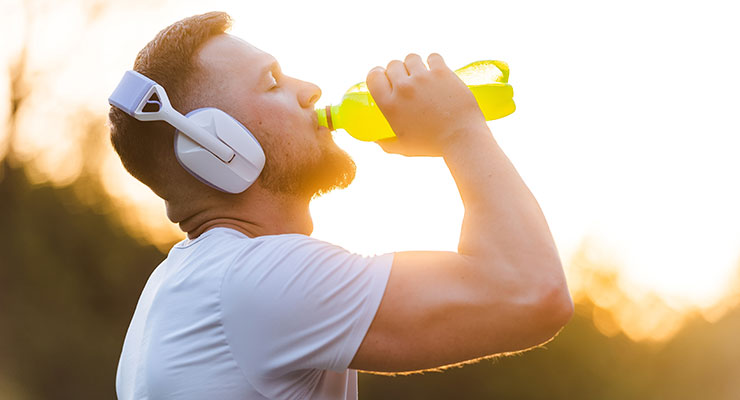
While energy drinks from a few main brands may dominate the marketplace, pre-workout supplements, cellular energy boosters, adaptogen formulas, mental energy products, and other options offer consumers a spectrum of solutions to address potential energy issues.
Caffeine, B-vitamins, and amino acids remain staples of common energy supplements while adaptogens, nootropics, creatine, and whole food sources of vitamins and minerals are gaining notoriety.
Drinks, gummies, shots, and capsules are the most common formats in this segment, but people are reaching for other convenient formats as well. Formulators are challenged to deliver “better-for-you” options that offer lasting benefits.
Multi-function, “energy-plus” products appeal to consumers intent on making their dollars work harder. Coupling hydration, mood, stress, immune, digestion, or metabolism benefits with energy, for example, can spice up formulas that rely on commonplace commodities to fight fatigue.
For example, Nature Made’s Wellblends Positive Mood & Energy softgels contain 200 mg of Panax ginseng root extract, 50 mg of 5-HTP from Griffonia simplicifolia seed extract, and a blend of B vitamins.
The company noted the formula was designed with ingredients to help support a positive mood and cellular energy production “in the midst of everyday stress.” 5-HTP is an amino acid naturally produced by the body to help make serotonin, B vitamins help convert food into cellular energy, and ginseng is an adaptogen traditionally used in herbal medicine to help increase mental and physical energy.
Top Takeaways
An overall shift toward functional, better-for-you energy products is noticeable as consumers assess the health implications of their product choices, said Larry Kolb, president, TSI Group.“With consumers seeking products that not only provide energy but also enhance performance and recovery, ingredients that can optimize muscular energy production are highly relevant,” he added. “Consumers are searching for energy drinks that can contribute to improved athletic performance and better recovery, aligning perfectly with the demand for added amino acids, electrolytes, and other performance-enhancing ingredients.”
Traditionally, energy drinks and supplements have been packed with stimulants.
“The active/energy ingredient was primarily caffeine and products were differentiated based primarily on flavor and delivery experience,” noted Steve Fink, vice president of marketing, PLT Health Solutions. “As the market matures, consumers are looking for a broader range of energy experiences—and ones that don’t come with the negative effects of overstimulation.”
As a result, non-stimulant energy has become increasingly attractive to consumers, “particularly when it is plant-based,” said Fink. “In the caffeine space, extended and delayed release forms of caffeine are increasingly utilized to reduce the unpleasant effects of instant release caffeine.”
Importantly, use occasions are becoming significant factors in how energy benefits are delivered, he added. “A more sophisticated approach to formulating centers on creating product-specific, customized energy profiles that meet the need of particular situations and use applications—whether it’s for sports, pick-me-ups, or late-night study sessions.”
Caffeine has clearly been the keystone ingredient of energy formulations, noted Jordan Miller, vice president of marketing, Nutrition21, “however, we are seeing growth in the trend of utilizing alternative ingredients that deliver a more refined form of energy beyond caffeine, which can support other benefits that consumers are looking for, such as enhancing mental or cognitive energy.”
Growth of non-stimulant ingredients reflects demand for sustained energy that allows people to perform at their best throughout the day, “without the crash that is often experienced with caffeine and other stimulant-based ingredients,” added Miller. “Like the rise in clean label products, the new trend is for consumers to prioritize a ‘clean’ source of energy; and deliver more targeted benefits aligned to their specific needs.”
Across the board, including the energy market, consumers are searching for healthier options, said Michael Crabtree, director of scientific affairs and technology, Bioenergy Life Science, Inc. (BLS).
“A variety of consumer products now have reduced sugar, natural ingredients, and no artificial flavors or preservatives,” he noted. “Other brands have introduced organic and vegan options. Another major trend is additional functionality. Many brands now offer beverages with added functional benefits like immune support, mental clarity, and stress reduction, incorporating ingredients like vitamins, minerals, and adaptogens. Bioavailability is essential to this trend. BLS’s line of specialty, branded, functional ingredients and technologies can assist in the increased absorption of water-soluble ingredients.”
Fink reiterated that energy benefits are formulated into a growing range of supplement products. “For example, in pre-workout ready-to-mix powders, customized energy profiles are attracting interest from product formulators. The same holds true in weight management products.”
Even some multivitamin/mineral products are putting energy front-and-center. New Chapter’s Perfect Energy Multivitamin contains 20 whole-food fermented vitamins and minerals to promote balanced energy/vitality and nervous system support.
Made with certified organic vegetables and herbs, the product contains a whole-food fermented nutrient blend delivering 21 minerals and vitamins, and complementary herbs including maca, green tea, schizandra, turmeric, and rhodiola.
As a complete multivitamin for foundational health, Perfect Energy also provides nutrients for heart, brain, bone, immune, vision support, and healthy hair, skin and nails, according to the company.
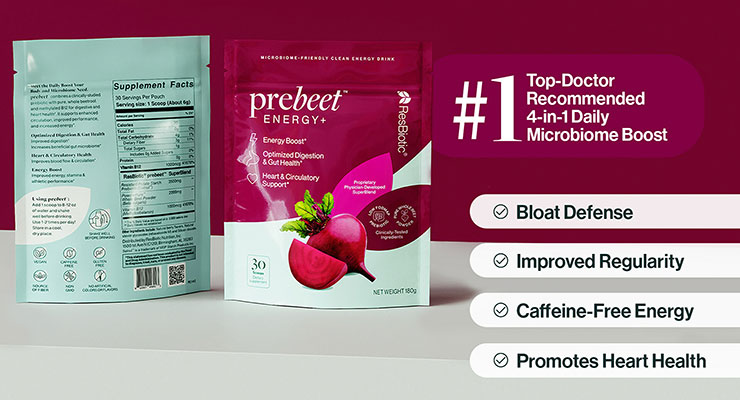
Indeed, the “energy-plus” market is diversifying to offer multiple benefits. For example, following the success of its resB Lung Support supplement, ResBiotic Nutrition, Inc. a leader in microbiome supplements, has introduced prebeet ENERGY+, a 4-in-1 caffeine-free formula designed to improve digestion (reducing bloat and gas) and regularity, boost all-natural energy, enhance skin appearance, and strengthen heart health.
The dietary supplement is available in a berry-flavor powdered format to mix in with cold water, a smoothie, yogurt, etc.
“The launch of prebeet ENERGY+ represents an important stride for ResBiotic as we continue to introduce individuals to a new, natural and comprehensive solution to approach total body health and resilience,” said C. Vivek Lal, MD, FAAP, founder and CEO of ResBiotic, in an announcement. “Our commitment to advancing microbiome health led us to develop this unique blend of highly effective ingredients that not only taste great but also address key aspects of daily wellness.”
At the core of the prebeet ENERGY+ formula is a prebiotic resistant potato starch, chosen to amplify the production of Bifidobacterium, which supports digestive wellness, and elevate levels of Akkermansia muciniphila, an important bacterium for improving gut/barrier function and permeability of the gut lining, or leaky gut.
The formulation not only promotes digestive wellness but also contributes to a healthier gut lining, the company said. Additionally, the infusion of whole beets is designed to enhance circulation and support heart health. Complementing these benefits, the formula includes a high dose of vitamin B12, vital for sustaining brain cell function and facilitating the conversion of food into cellular energy.
The prebiotic is free of gluten, sugar, caffeine, dairy, soy, and artificial ingredients. It’s also vegan, non-GMO, keto friendly and paleo friendly.
Quality of Life
The bottom line for energy drink and supplement users is whether a product can enhance perceived quality of life, said Maria Stanieich, marketing manager, Kyowa Hakko USA.More than 4 out of 5 U.S. supplement shoppers said it is important to their quality of life to have mental focus, mental energy, and the ability to concentrate, according to a survey by Kyowa Hakko.
“More than one-third (38%) reported having purchased a supplement specifically for energy, and half (47%) reported purchasing energy drinks in the 12 months prior to taking the survey. However, these consumers have expressed concerns that using a beverage or dietary supplement to boost energy could result in loss of sleep, anxiety, restlessness, and an energy crash that comes later.
As a result, many consumers are avoiding caffeine and other common ingredients that may cause negative side effects like increased heart rate, jitters, nervousness, and the inevitable crash.
This leaves the door open for alternatives like Cognizin Citicoline, omega-3 fatty acids, and ashwagandha, Stanieich said.
“It’s safe to say there is definitely an increasing area of attention overlap between sports nutrition and mental energy for consumers; the data speaks for itself,” Stanieich said. “Our 2023 consumer survey revealed focus on sports and exercise and focusing during the day as the second and third reasons for purchasing a supplement or energy drink in the past 6 months, behind mood improvement as the leading reason.”
Nutrabolt, maker of C4 energy drinks and supplements, now offers C4 Smart Energy, featuring Kyowa’s Cognizin Citicoline along with 200 mg of caffeine from green coffee beans, N-acetyl-L-tyrosine, potassium, niacin, and vitamin B12.
“Mental energy is attractive to consumers and product developers for a variety of reasons and can be considered a component in almost any type of supplement formulation,” said Fink. “One of the primary reasons is that mental energy is experiential; consumers can feel it almost immediately, as opposed to, say, cardio health or weight management supplements that can take weeks or months to be effective. So why wouldn’t you formulate a product that gives the customer instant gratification?”
Consumers recognize that mental energy supports improved performance, regardless of the task at hand, he added. “This is particularly the case in the sports/active nutrition market, and enhanced focus and long-lasting physical energy are highly prized by consumers. But increasingly, we are seeing opportunities for energy solutions in supplements that target diverse health categories and use occasions.”

Product Formats
Beyond traditional drinks, shots, and gummies, a variety of product formats are gaining popularity, catering to diverse consumer preferences, according to Kolb.“Powdered supplements offer the convenience of being easily mixed into beverages or smoothies, allowing for customizable dosage and flavor,” he said. “Energy bars serve as a practical snack option, providing sustenance and energy on-the-go. Chewing gums and energy strips or films offer discreet and quick ways to consume energy boosters, ideal for those who prefer not to drink their supplements.” Effervescent technologies like TSI’s FZZR can add a fun, fizzy element to energy supplementation, Kolb added.
Energy shots offer a concentrated, potent boost in a compact format, he continued. “Functional waters and energy gels are becoming popular among fitness enthusiasts for their hydrating and performance-enhancing properties. Additionally, more novel formats like breath sprays and functional chocolates introduce an element of innovation and enjoyment to energy supplementation.”
An increase in product formats and delivery systems has increased innovation in the energy category, said Miller, “by allowing brands to make use of novel and innovative ingredients or a unique combination of ingredients to deliver an energy boost.”
Mushrooms like lion’s mane, cordyceps, reishi, and others have emerged in the energy market, particularly as coffee substitutes or mixed into coffee blends. Brands like MUDWTR, Four Sigmatic, Om Mushrooms, Peak State Coffee, Ryze, and many others are dividing market share in this popular functional beverage category.
Alongside drink formats, products that promote healthy energy levels are finding success in gummies, ready-to-mix sachets, shots, juice drinks, and even snacks—“all offering the consumers seeking energy-related benefits the ability to select a product in their preferred method that fits their lifestyle needs and convenience preferences,” said Miller. “Successful brands are considering not just the energy benefit to deliver, but the target consumer and their relevant usage occasions to personalize products that feel bespoke to each consumer’s own lifestyle preferences.”
Meeting the needs of varying consumer groups by designing products that fit easily into their busy lifestyles is essential, according to Crabtree. “Beverages, gummy applications have exploded, however the popularity of effervescent and shot-size applications has also increased.”
With drinks and gummies holding a solid position as the most preferred formats, Stanieich said to expect this to continue for the foreseeable future. “What’s more important is the avenues people are choosing to buy these products. Nearly half of all consumers surveyed last year said they buy from Amazon.com and over one-third said they buy from a mass retailer’s website (like Walmart.com or Target.com). That means packaging becomes extremely important when considering shipping and delivery needs.”
Opportunities to Impress
One significant untapped opportunity in today’s market, according to Kolb, is targeting older consumers, who are often overlooked in favor of younger, fitness-focused consumers.“Products tailored for sustained energy and cognitive function could appeal to this group,” he said. “There’s also a growing interest in managing stress and improving sleep quality, creating a niche for products that balance energy with relaxation.”
The rise of plant-based diets highlights demand for vegan-friendly energy options, he added, while the need for hypoallergenic formulations caters to consumers with allergies or intolerances.
“Exploring gender-specific formulations can address the distinct health concerns of men and women,” said Kolb. “There’s also potential in products focused on cognitive and mood enhancement, incorporating nootropics for mental clarity. Both PEAK ATP and enfinity (paraxanthine) fit into many of these categories and are a great differentiator for brands looking to enter the energy market this year.”
According to Kyowa’s consumer survey, safety was reported as the top concern among customers when looking for a dietary supplement to boost energy or focus.
“We foresee brands to benefit from formulating with familiar ingredients that are backed by science,” said Stanieich. “It’s also crucial to note that only 67% of these consumers are satisfied with the current energy drinks on the market. To break through to this audience, the data suggest it is critical to communicate safety and efficacy.”
In addition to a shift to include more personalized benefits and diverse product formats, brands have the potential to communicate directly with consumers about efficacy when utilizing science-backed branded ingredients, said Miller.
Using clinically-backed cognitive health ingredients—such as Nutrition21’s nooLVL, a non-stimulant nootropic shown to deliver mental focus, quick processing, and memory enhancement—in products and on packaging and marketing, consumers get a clear picture of what’s behind the product’s benefits.
It also offers consumers an opportunity to learn more about the clinical studies done on that functional ingredient that validate product claims.
Marianne McDonagh, vice president of sales at BLS, said the majority of products positioned for energy only provide “stimulation as opposed to energy, and with stimulation you get the dreadful afternoon crash.” Bioenergy Ribose, on the other hand, can help solve unmet consumer needs.
“Ribose is the backbone of ATP, the energy currency in our bodies which delivers energy to our cells. While we produce ribose naturally, the process of making it is so slow and our demand is so high that our bodies are constantly at a supply-and-demand shortfall. Incorporating Bioenergy Ribose into energy drinks, supplements and foods speeds up that process, giving our bodies the true energy that we crave so much.”
There is room for both stim and non-stim options, according to Fink.
“Caffeine is king and will remain so,” he said. “It’s one of the most consumed substances on the planet and a huge percentage of consumers understand and are comfortable with it. The cons have to do with people’s tolerance to the substance and the potential for overuse. Some people cannot tolerate its use at all. Others do not enjoy the physical sensation.”
PLT’s non-stim mental energy ingredient Zynamite (Mangifera indica extract standardized to ≥ 60% mangiferin) has been clinically demonstrated to offer non-stim mental energy, increased physical power, faster exercise recovery, and improved exercise efficiency, Fink noted.
“Zynamite responds to a growing segment of consumers who prefer non-stimulant approaches to energy or mental energy,” he said.
Additionally, some of the negative perception of stimulant-based energy can be addressed with “more sophisticated approaches to formulating,” said Fink, noting zümXR Targeted Release Caffeine ingredients as a form of modified release caffeine developed for food, beverage, and supplement products.
“All zümXR ingredients feature a state-of-the-art delivery system technology drawn from the pharmaceutical industry that represents a significant step forward from conventional caffeine coating technologies,” Fink offered. “With zümXR Targeted Release Caffeine ingredients, consumer products companies can create unlimited types of energy profiles—by combining immediate release, delayed release, and extended release ingredients.”
These energy profiles can be targeted to specific product types: the morning pick-me-up, the pre-workout formula, or the all-night study aid, for example. “A key driver for development of these products was to control and extend the level of caffeine in the blood, so that the common complaint of ‘peaks and crashes’ related to standard (immediate release) caffeine consumption is evened out into a steadier level.”
Market Forecast
Looking ahead to the next few years, Stanieich said to expect the energy market to lean into communicating safety and efficacy while also promoting usage of natural ingredients.“Safety, effectiveness, and purity are among the top three concerns for consumers when they are looking for a beverage to boost energy or focus,” she noted. “We also expect the energy market to have an increased focus on reframing the conversation around coffee drinks. Behind energy drinks and smoothies, coffee drinks are the top purchase among consumers looking for an energy boost in the past 6 months.”
However, many people have reservations about how this energy-focused application might make them feel. In the case of energy-boosting applications, low-to-no caffeine formulations are a naturally complementary extension of caffeinated beverage and supplement brands. Formulation with science-backed ingredients can help supplement consumers get past hesitations they may have about trying a new product.”
McDonagh predicted increased regulatory scrutiny and a stronger emphasis on transparency as the energy market evolves.
“With increasing consumer health awareness, there is already more scrutiny on the ingredients, including their purity and efficacy. This is leading to even more transparency in labeling and marketing practices. The shift from the Baby Boomer and Gen X consumer matrix toward the Millennial and Gen Z paradigm will also bring a much more technologically sophisticated consumer. We anticipate science and research, for both ingredients and finished products, to take on an even bigger role in the consumer decision-making process.”


